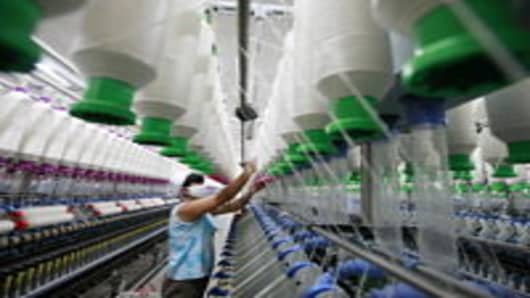Chinese labor costs have soared this year despite a slowdown in the broader economy, according to new official data that showed an average 22 percent rise in minimum wages.
The government, which has made it a policy priority to boost incomes, welcomed the development, but economists warned that it would add pressure to companies already struggling against weak global demand.
As of the end of September, local authorities in 21 of China’s 31 provincial-level regions had increased minimum wages by an average 21.7 percent, the ministry of human resources and social security said. Several more have also promised to raise minimum wages before the end of the year.
Compared with developed markets, labor costs in China are still low. The highest minimum wage is in Shenzhen, an export hub next to Hong Kong, at 1,320 yuan ($207) a month. In hourly terms, Beijing workers are the best paid, with the floor set at 13 yuan ($2.05) an hour.
But compared with other emerging markets, China is quickly getting more expensive. The hefty increase in minimum wages this year comes on top of similar gains over the past two years.
The effects are beginning to show. China’s share of low-end manufacturing imports in the United States has peaked and is now declining, according to UBS. Cheaper countries in Asia, especially Vietnam and Bangladesh, have been the main beneficiaries, eating into China’s market share.
Increasing the minimum wage is, in part, a method used by the Chinese government to nudge exporters up the value chain, encouraging them to produce more sophisticated goods.
It is also seen as a way to narrow the country’s yawning wealth gap and to stimulate more domestic consumption. The government has declared that it wants average incomes to grow more quickly than nominal gross domestic product over the next five years.
Market forces are playing an important role as well. Although there has been much talk about a looming labor shortage in China, the real issue is a mismatch between demand and supply, said Haibin Zhu, chief China economist with J.P. Morgan. Industries are looking for skilled manual laborers, but colleges are producing vast numbers of graduates who are not willing to do low-end work, he said.
The stiffening global headwinds have started to hit China in recent months. The economy grew a robust 9.1 percent in the third quarter, but that was the slowest in more than two years and analysts expect the slowdown to accelerate.
Smaller companies have fared especially poorly. After a series of minor bankruptcies, the government has encouraged banks to give small companies more financial support, though rising labor costs present an even bigger challenge for them.
Nevertheless, exporters that have followed the prescription of moving up the value chain have done well in recent years, with their profit margins growing more quickly than the national average, Mr Zhu said.
“They do have the capacity to digest some degree of wage increase. Of course, we have to watch how sustainable this ability will be over the next five years,” he said.
Another concern is the impact of rising wages on inflation, which is running near a three-year high. But economists say that is more of a medium-term issue, because the main driver of inflation this year has been rising food prices, not wages.


